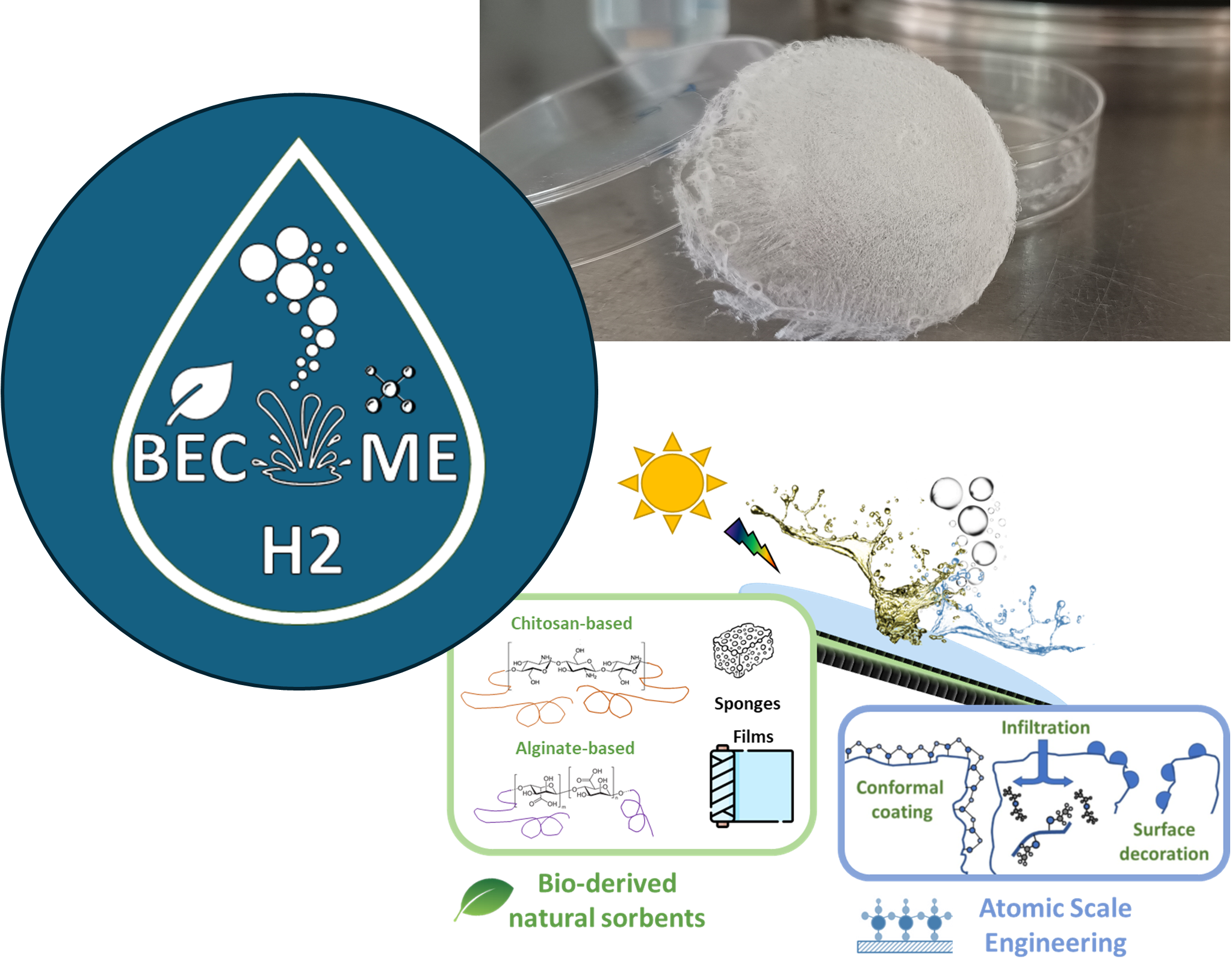BECOMEH2 – BiodErived and atomiC scale engineered natural adsOrbents: from water reMEdiation to hydrogen evolution

Duration: From 30 Nov 2023 – 29 Nov 2025 (2 years)
Funding Institution: Ministero dell’Università e della Ricerca (MUR) – PRIN 2022PNRR P2022XHMRY
Principal Investigator: Alberto Perrotta (NANOTEC)
Contact person in IPCF: P.Fini
Other research units (contact person): University of Bari (Vito Rizzi), CNR-IRSA (Carlo Pastore).
Settori ERC: PE8_11 Environmental engineering, e.g. sustainable design, waste and water treatment, recycling, regeneration or recovery of compounds, carbon capture & storage; PE5_4 Thin films; 3. PE11_1 Engineering of biomaterials, biomimetic, bioinspired and bio-enabled materials
Keywords: water remediation; atomic layer deposition (ALD); bio-derived adsorbents; vapor-phase techniques; photocatalysis
Emerging contaminants, together with azo-textile dyes are widespread and often detected in receiving water bodies. As a result, the demand to develop cost-effectiveand sustainable depollution technologies is increased. In this perspective, the photocatalytic oxidation driven by solar energy is a competitive solution to clean up water.
BECOMEH2 proposes a unique combination of vapor phase treatments applied on bio-derived natural polymers used as pollutants sorbents to simultaneously address two key challenges: i) enhancing the removal of emerging pollutants and azoic textile dyes by photocatalysts deposited on engineered bioderived sorbents ii) exploiting the cooperative photo-redox reactions in aqueous environment to simultaneously produce hydrogen using the organic pollutants as sacrificial agents.
The careful choice of the working materials is the key to achieve these ambitious goals. The photocatalytic materials will be deposited by means of atomic layer deposition (ALD) and applied to porous and non-porous bioderived natural adsorbents allowing the simultaneous removal of pollutants and regeneration of the adsorbing materials by solar-driven solid-state photocatalysis. Specifically, alginate- and chitosan-based polymers will be adopted as hydrogels to produce free-standing non-porous films and porous sponges.
